Typical damage patterns on ceramic brake discs
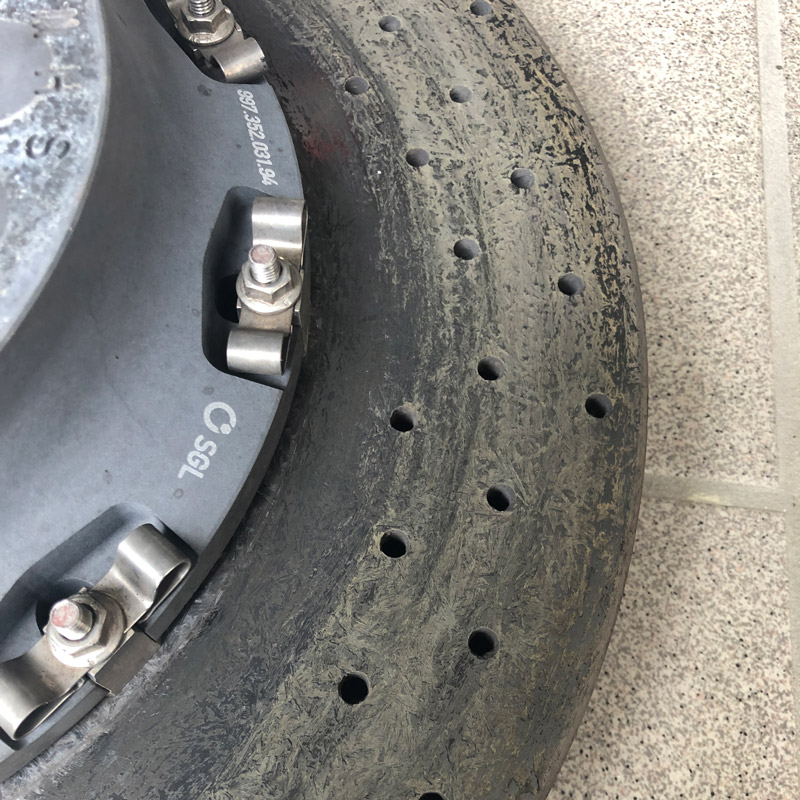
Normal wear pattern of a PCCB (Porsche 997 Turbo)
The carbon fibres embedded in the wear layer burn out and leave depressions in the surface, this is easy for us to repair, the brake disc is in new condition again after our treatment.
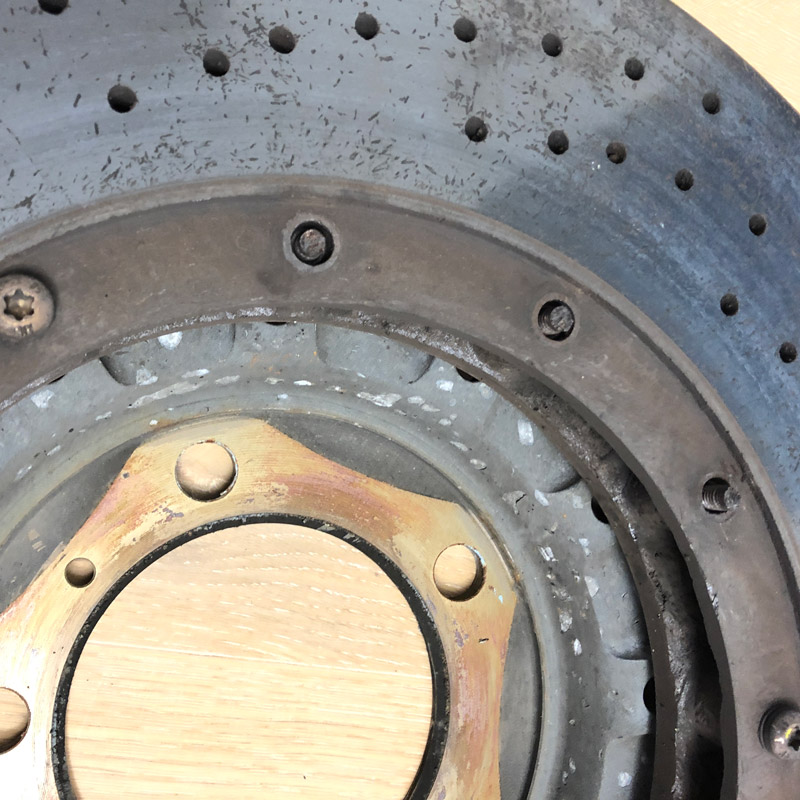
Defective / rotten fasteners
Due to the continuous temperature change of up to 1200 degrees Celsius to ambient temperature, salt, humidity, etc., the screw connections are weakened to such an extent that they can fall off by themselves or tear off at the slightest torque on the screw head. The connecting element “floater” is no longer fixed and can be lost. This can have very serious consequences.
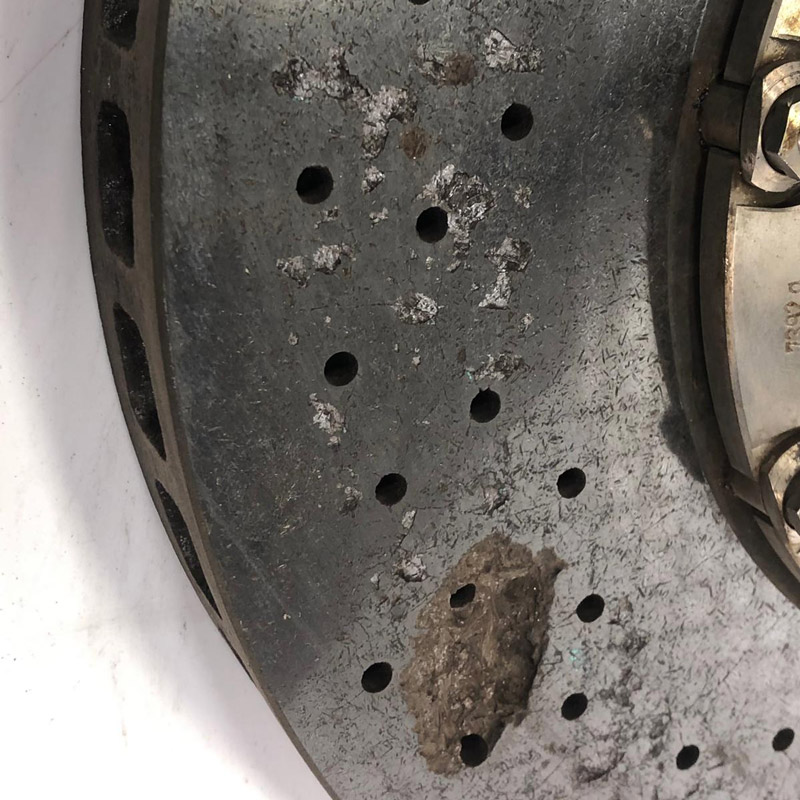
Delamination of a CCB 2nd generation (Audi)
The cause of this is a deteriorating bond between the wear layer and the core over time. The brake pad then tears out surface segments. This is very costly to repair, because the wear layer must be completely rehabilitated, which is not yet possible. This type of repair is currently still in the development phase.
However, we can fill and repair smaller break-outs of this kind as part of the renewal. However, one must bear in mind that the bond cannot be completely restored by our method.
These repairs are excluded from the warranty
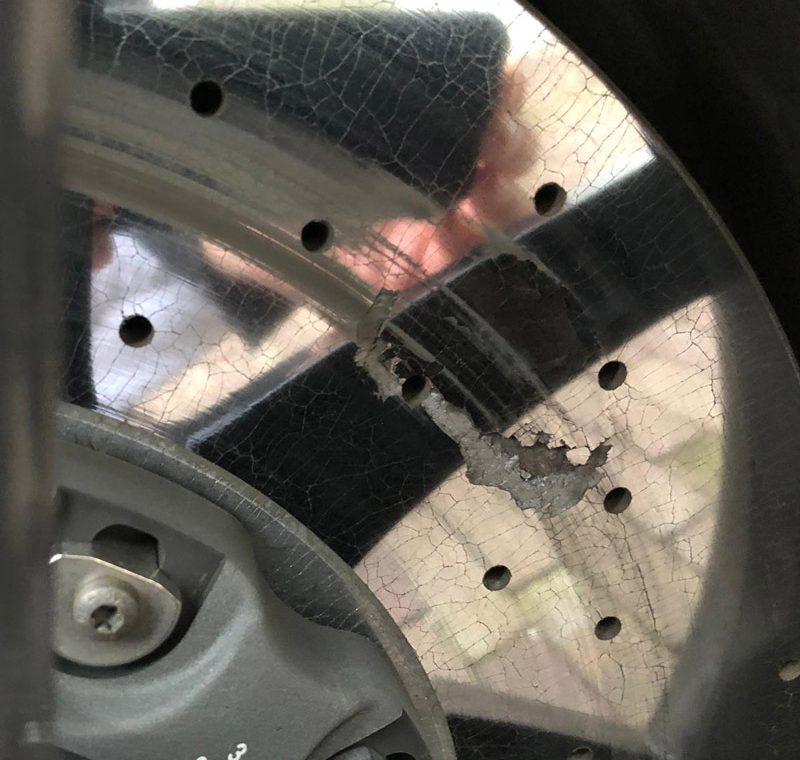
Delamination on a 3rd generation PCCB
The cause is a defective bond between the disc core and the wear layers, which leads to detachment of the surface. This is very costly to repair, because the wear layer must be completely rehabilitated, which is not yet possible. This type of repair is currently still in the development phase.
Smaller break-outs, however, can be filled and thus repaired within the framework of our procedure. In this way, further chipping can usually be prevented.
However, these repairs are excluded from the warranty
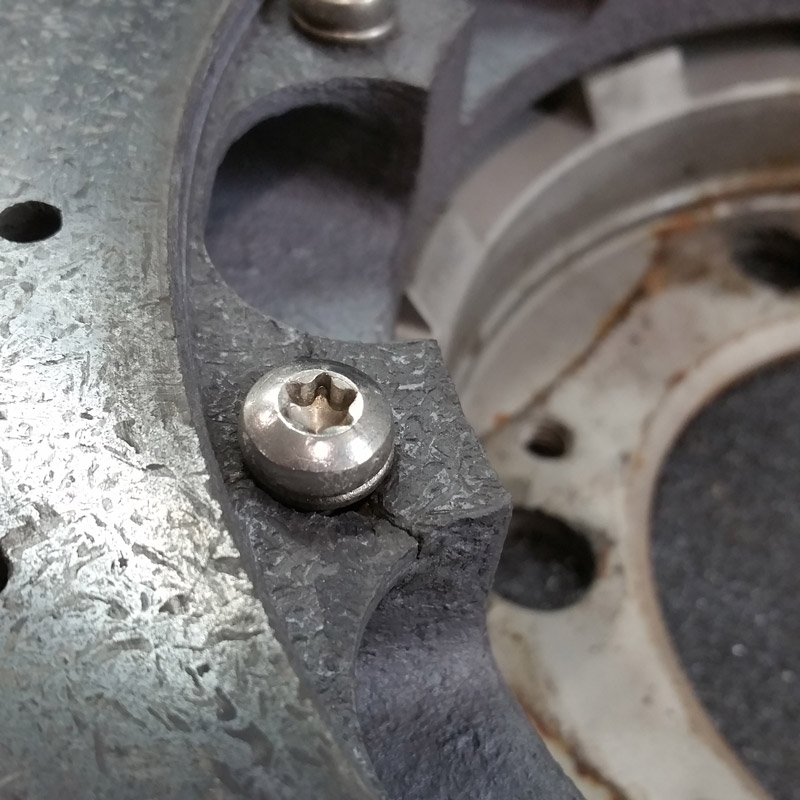
Crack formation on the mounting of a fastening element
The cause is the blockage of one or more “floaters”, such as rust, which leads to overloading of the material at this point. Due to the blockage of floaters, the torque between the disc and the hub can no longer be transmitted evenly. This damage cannot be repaired.
